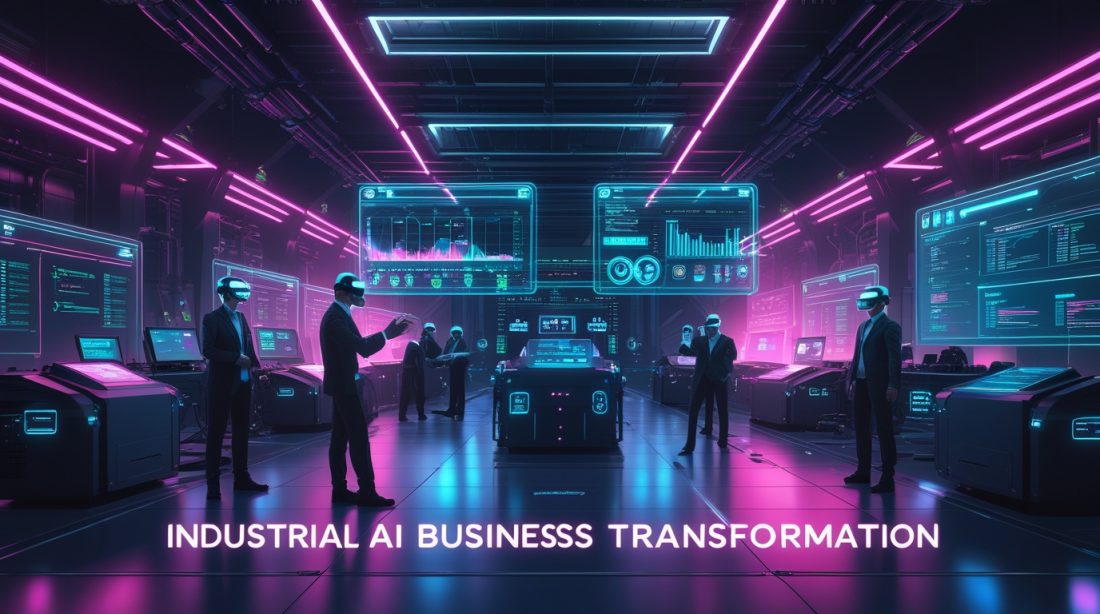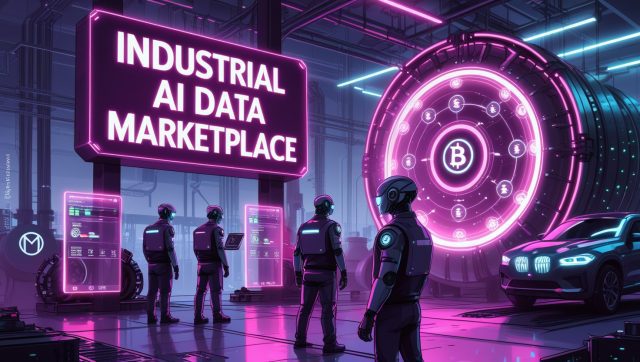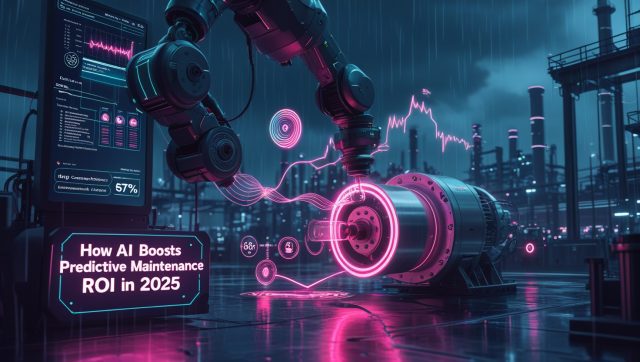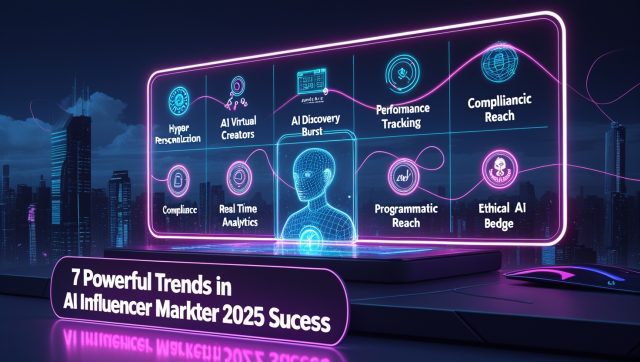Industrial AI business transformation is redefining success in 2025. The most successful service companies aren’t just completing tasks—they’re selling insights, predictions, and automated decision-making. Here’s how industrial AI is transforming service businesses from labor brokers into intelligence providers.
For decades, service companies built their businesses around a simple equation: hours times people equal revenue. But that model is crumbling. According to recent analysis, the global industrial AI market has reached $43.6 billion and is projected to grow at a staggering 23% CAGR to $153.9 billion by 2030.
This isn’t about incremental improvement. It’s about fundamental business model transformation. Service providers that once sold manual labor and basic implementation are now building businesses around proprietary data, predictive analytics, and AI-driven intelligence products. Marc Benioff, CEO of Salesforce, recently noted that AI is already doing up to 50% of the company’s workload, reflecting a broader industry shift toward embedded intelligence.
Why Industrial AI Business Transformation Is Driving the Shift from Labor to Intelligence
The economic imperative behind this shift is unmistakable. Traditional labor-based service models face inevitable scaling constraints—more revenue requires more people, with diminishing returns. AI-powered intelligence models, however, create reusable assets that generate value far beyond what any hourly billing structure could support.
- Productized insights: Instead of just implementing systems, service firms now productize the insights those systems generate. Accenture, for instance, has launched a dedicated data and AI business group that generated $900 million in generative AI bookings in a single quarter.
- Outcome-based pricing: Intelligence products enable value-based pricing models tied to client outcomes rather than hours worked. France-based automotive manufacturer Renault reported €270 million in savings on energy and maintenance in a single year by deploying predictive maintenance AI tools .
- Scalable IP: Unlike labor, intelligence products can scale across multiple clients without proportional cost increases. Taiwan-based electronics manufacturer Pegatron developed PEGA AI, an automated optical inspection tool that achieves 99.8% defect detection accuracy with 4x improvement in throughput .
How intelligence products create new revenue streams
The transformation from labor to intelligence unfolds across three distinct phases, each creating increasingly sophisticated revenue opportunities.
Phase 1: Enhanced traditional services
Initially, AI augments existing offerings. Customer service operations integrate AI agents to handle routine inquiries, while human specialists focus on complex cases. This isn’t about replacing people but amplifying their capabilities. According to McKinsey, AI can drive $4.4 trillion in added productivity growth potential from corporate use cases .
Phase 2: Specialized intelligence products
As service companies accumulate client data and implementation experience, they develop specialized AI products. These might include predictive maintenance systems, quality control platforms, or supply chain optimization tools. What’s significant is that these become standalone offerings rather than additions to service contracts.
Phase 3: Fully automated intelligence solutions
The most advanced stage involves fully automated intelligence solutions that require minimal human intervention. For example, Phyron’s survey of 500 U.S. car dealers found that half expect AI to sell vehicles autonomously by 2027—handling marketing, buyer questions, negotiation, and financing without human input .
Why data architecture determines intelligence quality
You can’t sell intelligence without a sophisticated data foundation. The quality of a company’s AI-driven insights directly correlates with its data architecture maturity.
Industrial AI depends on explainability, safety, and payback discipline rather than the creative text generation that dominates consumer AI applications . This demands robust data management practices that many organizations lack.
Forward-thinking service companies are investing in industrial DataOps—now the fastest-growing industrial software segment with a projected 49% CAGR until 2028 . These platforms clean, contextualize, and orchestrate operational data flows, transforming raw information into actionable intelligence.
Manufacturers are simultaneously breaking down legacy data siloes by creating unified data lakes (or “lakehouses”) that enable data lineage, shared context, and elastic compute resources. This architectural shift makes consistent AI applications possible across functional areas.
Why workforce transformation is critical for intelligence companies
The transition from labor to intelligence demands more than technological change—it requires fundamental workforce evolution. As AI automates routine tasks, service companies must develop new capabilities in data science, AI governance, and strategic consulting.
The New York Fed’s research found that among businesses using AI, just over a third of service firms report retraining workers in response to AI . This retraining focuses on developing human skills that complement AI capabilities—critical thinking, client relationship management, and strategic problem-solving.
Toyota exemplifies this approach with its commitment of 1.7 trillion yen ($10.6 billion USD) to AI and software-centered vehicles, emphasizing the human element of AI through its Smart Factory vision. The company has established the Toyota Software Academy, offering approximately 100 training courses where employees learn practical knowledge in AI, data security, and related fields .
How to begin your intelligence transformation
Starting the journey from labor-based services to intelligence products requires strategic focus. According to MIT research, about 5% of AI pilot programs achieve rapid revenue acceleration, while the vast majority stall . Successful implementations share common characteristics:
- Partner strategically: Purchasing AI tools from specialized vendors and building partnerships succeed about 67% of the time, while internal builds succeed only one-third as often.
- Empower line managers: Rather than relying solely on central AI labs, the most successful deployments empower line managers to drive adoption and select tools that integrate deeply with workflows.
- Start with high-ROI use cases: Target applications with clear financial returns. For many manufacturers, automated optical inspection represents the leading industrial AI use case, accounting for approximately 11% of all applications.
- Measure business outcomes: Track AI’s impact through business-relevant metrics like new revenue, accelerated project delivery, and productivity gains rather than technical benchmarks alone.
The future of service: Intelligence as the core product
The companies that will dominate the next decade of service delivery aren’t those with the largest workforce—they’re those with the most valuable intelligence assets. As AI capabilities advance, the distinction between service providers and product companies will blur permanently.
According to PwC’s 2025 predictions, AI agents could effectively double your knowledge workforce, transforming speed to market, customer interactions, and product design . This digital workforce will become the foundation of service companies’ intelligence offerings.
The economic impact is substantial: the manufacturing industry alone stands to gain $3.78 trillion from AI by 2035 . Service companies that position themselves as intelligence providers rather than labor brokers will capture disproportionate value in this transformation.
The question is no longer whether AI will transform service business models, but which companies will lead that transformation and which will struggle to adapt. The era of selling intelligence has arrived.
Fast Facts
Industrial AI business transformation is driving how service companies transition from selling labor hours to selling intelligence products—predictive insights, automated decision-making, and specialized AI tools. This transformation is creating new revenue streams and business models, with the global industrial AI market projected to reach $153.9 billion by 2030. Successful companies are building robust data architectures, retraining their workforces, and developing specialized AI products that deliver measurable client outcomes like €270 million in annual savings for manufacturers.
Stay ahead of the curve on how AI is transforming business models across industries.
Subscribe to our newsletter for weekly insights on industrial AI and intelligence-based business models
Further Reading
- SymphonyAI IRIS Forge: The Fast-Deploy Industrial AI Platform Explained
- 5 Compelling Reasons the AI Partnership Revenue Share Model Is Dominating in 2025
- How AI Boosts Predictive Maintenance ROI in 2025
- The Rise of the Industrial AI Data Marketplace
- How White-Label AI Dashboards Are Reshaping Industrial Markets



